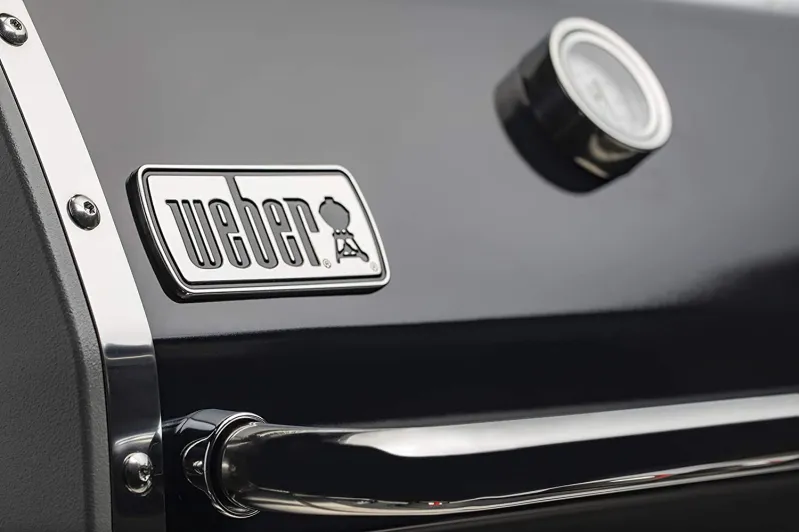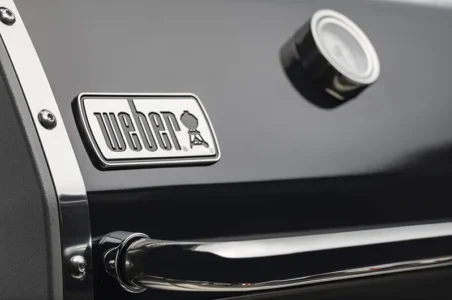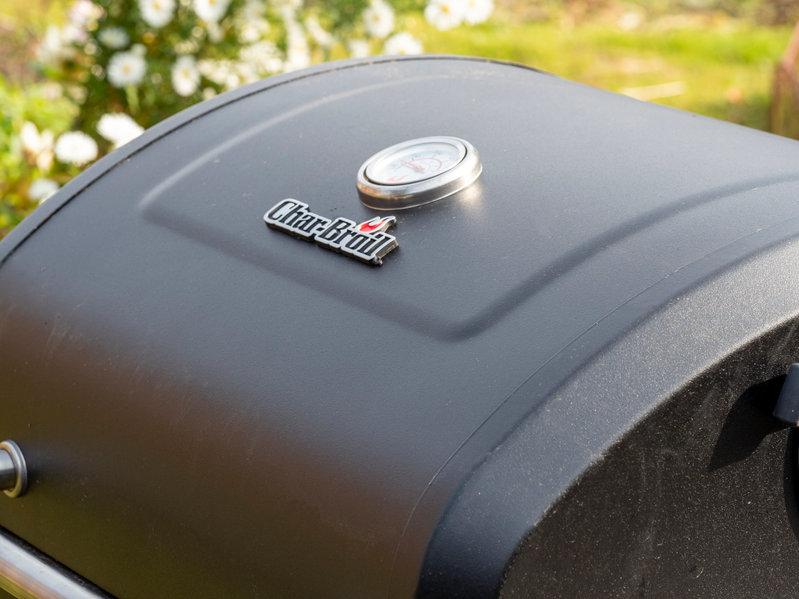
Deciding between a Weber and a Char-Broil grill often boils down to personal preferences and specific needs.
Both brands have established themselves firmly in the grilling industry, offering a wide range of options for different types of grillers.
Whether it’s the precision engineering of a Weber or the affordability of a Char-Broil, each offers unique benefits.
Weber is well-known for durability and superior cooking performance, often favored by those seeking long-term investment in their outdoor cooking setup.
Char-Broil, on the other hand, appeals to budget-conscious shoppers who don’t want to compromise too much on quality.
Those looking for a robust, high-quality grilling experience may lean towards Weber, whereas those prioritizing cost-effectiveness might explore Char-Broil options more thoroughly.
Both brands have a strong presence and reputation, each offering a variety of models suited for different grilling needs.
Whether you’re looking for portability, advanced features, or just basic functionality, examining the individual features and customer reviews can guide you to the right choice.
Their offerings reflect changes and trends within the grilling industry, ensuring something for everyone.
Brand Histories and Core Values
Weber and Char-Broil have carved their niches in the grill market with distinct histories and values.
Weber embodies a legacy of durable, quality craftsmanship, while Char-Broil focuses on innovation and making grills accessible to a broad audience.
Weber: A Legacy of Quality
Since its inception in 1952, Weber has been synonymous with superior grill quality.
The brand was founded by George Stephen, who revolutionized outdoor cooking by designing the Weber Kettle.
The invention not only changed grill design but also set high standards for durability.
Weber is committed to delivering products that last.
They use premium materials, ensuring their grills withstand various weather conditions and daily use.
This dedication to durability has earned Weber a loyal following among grilling enthusiasts who value long-term reliability.
Char-Broil: Innovation and Accessibility
Char-Broil has a rich history of innovation dating back to its founding in 1948.
Originally a company focused on manufacturing charcoal grills, it quickly adapted to evolving market demands.
Char-Broil introduced one of the first electric grills in 1973 and continues to lead in technological advancements.
This brand is known for making grilling accessible with competitive pricing.
Char-Broil designs grills for various budgets without compromising on essential features.
Their focus on user-friendly designs and adaptability has made them a favorite among diverse customers, from beginners to seasoned grillers.
Key Comparison Factors: Weber vs Char-Broil
When comparing Weber and Char-Broil, several factors come into play.
Each brand excels in specific areas, making it crucial to understand how they differ to choose the right grill for your needs.
Here’s a detailed look at the key aspects:
Performance
The performance of a grill boils down to how well it cooks, distributes heat, and enhances the flavor of food.
- Weber
Weber grills are renowned for their consistent heat distribution and precise temperature control.
Features like the Flavorizer Bars—angled metal pieces located under the cooking grates—capture drippings and convert them into smoky flavor, which infuses the food.
Additionally, Weber grills excel at both direct and indirect cooking, allowing for versatile recipes, from quick steaks to slow-cooked ribs.
- Char-Broil
Char-Broil’s standout feature is its TRU-Infrared technology, which prevents flare-ups while ensuring even heat distribution.
This system converts the flame’s heat into radiant energy, reducing hot spots and cooking food more evenly.
This makes Char-Broil grills particularly beginner-friendly, as they deliver consistent results without requiring much grilling experience.
For precision and advanced cooking techniques, Weber takes the lead.
For even heat and beginner-friendly operation, Char-Broil is the better choice.
Build Quality and Durability
The materials and construction of a grill affect its lifespan, maintenance, and resilience to outdoor conditions.
- Weber
Weber grills are made with premium materials such as porcelain-enameled cast iron, stainless steel, and heavy-duty aluminum.
These materials not only retain heat well but also resist rust and corrosion.
Weber grills are built to last for years, even with regular use, making them a great long-term investment.
- Char-Broil
Char-Broil focuses on lighter, more affordable materials like powder-coated steel and thin aluminum, which make their grills easier to move and store but less durable over time.
While the construction quality is decent for the price, heavy use or exposure to harsh weather may lead to wear and tear more quickly.
Weber wins for durability and premium construction.
Char-Broil is suitable for those who value portability and affordability over longevity.
Ease of Use
Ease of use is an important consideration, especially for beginners or those looking for convenience in setup, operation, and maintenance.
- Weber
Weber grills are designed for enthusiasts who enjoy a hands-on experience.
While assembly might be slightly more complex due to the robust build, features like the GS4 Grilling System on gas grills (which includes improved ignition and grease management) simplify operation.
However, Weber grills often require regular cleaning and maintenance to keep them in top condition.
- Char-Broil
Char-Broil grills prioritize user-friendliness.
Most models are designed for quick assembly and include features like tool hooks, side burners, and storage spaces for added convenience.
Their lighter weight and compact designs make them easy to move around, and their cooking systems are intuitive, even for first-time users.
Char-Broil wins for ease of use and beginner-friendly features.
Weber suits those willing to invest more time in assembly and upkeep for advanced performance.
Price Range and Value for Money
Budget is a deciding factor for many buyers.
While Weber and Char-Broil cater to different price segments, both offer excellent value for their target audience.
- Weber
Weber grills are priced in the mid-to-high range, reflecting their premium materials, innovative features, and long-term durability.
Though the upfront cost is higher, the longevity and performance of these grills make them a worthwhile investment for frequent grillers or enthusiasts.
- Char-Broil
Char-Broil’s affordability is one of its strongest selling points.
Their grills are competitively priced in the low-to-mid range, making them accessible to casual grillers or those on a budget.
Despite the lower price, Char-Broil provides good functionality and innovative features like TRU-Infrared cooking technology.
Char-Broil is ideal for budget-conscious buyers, while Weber offers superior value for those willing to spend more for premium quality.
Customer Support and Warranty
After-sales support and warranty coverage are critical when investing in a grill.
- Weber
Weber stands out with extensive warranty coverage, often providing warranties of up to 10 years on key components like burners and cooking grates.
Their customer service is highly rated, with accessible support channels for troubleshooting or replacement parts.
- Char-Broil
Char-Broil’s warranties are typically shorter, ranging from 1 to 5 years depending on the model.
While their customer support is responsive, the shorter warranty reflects the brand’s focus on affordability and accessibility rather than longevity.
Weber offers superior warranty coverage and customer support, making it the more reliable choice for long-term use.
Two Popular Gas Models Head-to-Head
 The Weber Spirit II E-310 is a premium grill designed for those who value performance, durability, and innovative features.
The Weber Spirit II E-310 is a premium grill designed for those who value performance, durability, and innovative features.
- Build Quality: Built with porcelain-enameled cast iron grates and stainless steel components, ensuring longevity.
- Performance: Equipped with the GS4 Grilling System, it includes Flavorizer Bars for enhanced flavor and efficient heat distribution. It offers 30,000 BTUs over three burners with 529 square inches of total cooking space.
- Features: Compatible with Weber’s iGrill 3 technology for smart temperature monitoring. Foldable side tables and tool hooks add convenience.
- Warranty: Comes with an impressive 10-year warranty on key components.
Best For: Serious grillers who want consistent results and are willing to invest in long-term quality.
 The Char-Broil Performance 4-Burner is a budget-friendly option that doesn’t compromise on practicality and versatility.
The Char-Broil Performance 4-Burner is a budget-friendly option that doesn’t compromise on practicality and versatility.
- Build Quality: Features a stainless steel design with a closed cabinet for storage, though it’s not as robust as Weber’s materials.
- Performance: Offers 36,000 BTUs across four burners, plus a 10,000 BTU side burner for sauces or side dishes. It has a 475-square-inch primary cooking area with TRU-Infrared technology in select models.
- Features: Includes a side burner and enclosed cabinet for added convenience. Simple ignition and controls make it beginner-friendly.
- Warranty: Limited warranty of 1-5 years depending on the component.
Best For: Casual grillers or beginners who want a large cooking area at an affordable price.
Key Differences
- Price: Char-Broil is more budget-friendly, while Weber offers better long-term value.
- Build Quality: Weber excels in durability with premium materials; Char-Broil focuses on affordability.
- Features: Weber’s iGrill 3 compatibility and advanced grease management system stand out, while Char-Broil provides a side burner and practical storage.
- Cooking Area: Char-Broil has a slightly larger primary cooking surface, but Weber’s system offers better heat consistency.
- Warranty: Weber offers a longer warranty for peace of mind.
Which Should You Choose?
- Choose the Weber Spirit II E-310 if you want a durable, high-performance grill with advanced features and are ready to invest more upfront.
- Choose the Char-Broil Performance 4-Burner if you’re looking for an affordable, user-friendly grill with a large cooking area and practical add-ons like a side burner.
Both grills cater to different needs, so your choice should align with your budget, cooking frequency, and desired features.
Two Popular Charcoal Models Head-to-Head
 The Weber Kettle Premium is a classic charcoal grill known for its iconic design and reliable performance.
The Weber Kettle Premium is a classic charcoal grill known for its iconic design and reliable performance.
- Build Quality: Made with porcelain-enameled steel, it resists rust and peeling, ensuring long-lasting durability.
- Performance: Offers 363 square inches of cooking space, enough to cook for 4-6 people. Its adjustable dampers provide precise temperature control.
- Features: Includes a hinged cooking grate for easy charcoal refills and a one-touch cleaning system with an ash catcher for hassle-free maintenance.
- Portability: Equipped with durable wheels for easy movement.
Best For: Traditional grillers who want a time-tested, high-quality charcoal grill with excellent temperature control.
The Char-Broil Oklahoma Joe’s Firecraft Series Barrel Charcoal Grill offers a durable, heavy-duty steel design with 360-degree cooking access, making it ideal for versatile grilling techniques and larger gatherings.
- Design and Build: This grill features an open barrel design, offering 360-degree access to the cooking area. Constructed with heavy-duty steel, it emphasizes durability and a rugged aesthetic.
- Cooking Performance: It boasts a total cooking area of 480 square inches, divided into two 240-square-inch grates. The open design allows for versatile cooking techniques, including searing over open flames and elevated cooking for indirect heat.
- Features: The grill’s open barrel design enables easy fire management without disturbing the food. However, it lacks some of the convenience features found in the Weber, such as a hinged grate or ash catcher.
Key Differences
- Design: The Weber’s closed kettle design promotes efficient heat retention, while the Oklahoma Joe’s open barrel design offers greater accessibility and versatility in cooking styles.
- Cooking Area: Oklahoma Joe’s provides a larger total cooking area, suitable for larger gatherings, whereas the Weber’s size is adequate for smaller groups.
- Features: Weber includes convenience features like a hinged grate and ash catcher, enhancing user experience. Oklahoma Joe’s focuses on an open design for versatile cooking but lacks some of these conveniences.
Conclusion
- Choose the Weber Kettle Premium if you prefer a compact, efficient grill with user-friendly features and excellent heat retention, suitable for traditional grilling methods.
- Choose the Char Broil Oklahoma Joe’s Firecraft Series Barrel Charcoal Grill if you desire a larger cooking area with 360-degree access, allowing for versatile cooking techniques and accommodating larger gatherings.
Your choice should align with your specific grilling preferences, space considerations, and the scale of your typical cooking sessions.



